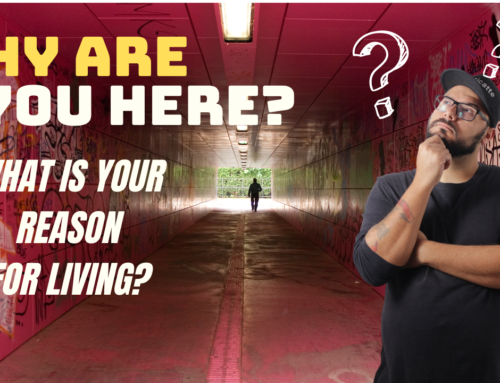THE ADVANTAGE OF INCLUSIVENESS
Putting aside stereotypes, prejudice, and biases has its advantages.
What are they, and why was inclusiveness so important to Jesus and his disciples?
We are continuing our look at God’s love for us and his plan (his mission) to bridge the gap between us and him.
His mission is to bring us back into a loving relationship with him. He wants us to become His disciples and members of his family.
Thus, He calls for us to respond to His love.
But our relationship with Him does not end with His call, for a call without action from the one being called has no value.
He calls for us today to be inclusive, not exclusive.
How can we practice inclusiveness?
Review our past and present videos at SabbathSchoolDaily.com or visit my YouTube Channel,
Sabbath School Daily by Dr. Brenda Ware Davis
Let Us Inviting God’s Presence:
Father, free us from stereotypes, prejudice, and discrimination toward others. Liberate us from any prejudices so that we may effectively do what you have called us to do. In Jesus’ Name, Amen.
God’s Mission, My Mission
(Lesson 11)
Mission to the Unreached
Part 1: Introduction
Becoming liberated from stereotypes, racism, prejudice, and biases opens the door for us to have genuine conversations and connectedness with others who may be of a different race, national origin, culture, ethnicity, or religious belief.
This calls for us to treat everyone with respect and dignity regardless of their background or national origin.
In our mission to share the good news about Jesus Christ, we must be authentic and void of biases.
For us to share with others about Jesus we need divine intervention.
We need God to transform our minds.
Thus, we must ask God to help us as we seek to do his divine will.
From the fall of humanity, in Genesis 3:9, we find a loving God seeking to find His lost children.
9 Then the Lord God called to the man, and said to him, “Where are you?” (Genesis 3:9).
This has been God’s mission for the lost down through the ages.
Read Revelation 14:6–12
It is God’s final message of warning to his lost children in the form of three messages, delivered by three angels.
The loss includes those living in inner cities.
In 2018, a report from the United Nations indicated that 55% of the people living on this earth live in urban areas.
This number is expected to grow to 68% (if Jesus doesn’t come) by 2050.
Urban areas have a high population with people living in close proximity to one another.
God calls His people to share the Good News About Jesus with those living in these urban areas. (Split)
Yet, filled with prejudice and preconceived ideas, many of those professing Christ act the same as Jonah when God calls them to do His work in the cities.
For whatever reason, they run in the opposite direction!
However, Romans 15:4 tells us that:
4 For whatever things were written before were written for our learning, that we through the patience and comfort of the Scriptures might have hope. (Romans 15:4).
Therefore, we must learn from the story of Jonah, so we don’t make the same mistakes he did.
As a matter of fact, when Jesus lived on this earth, He interacted with people in the cities of Israel and in foreign regions.
Therefore, in this study we walk in the footprints of Jesus to discover what he did for the people in the cities of Tyre and Sidon.
It is our intention to learn from His work how we can share the Good News about Jesus with those living in urban cities.
For starters, read Judges 3:1–6, 1 Kings 5:1–12, and 1 Kings 11:1–6. Then continue to the next segment of this video, Part 2: Mission to the Regions Beyond.
God’s Mission, My Mission
(Lesson 10)
Mission to the Unreached
Part 2: Mission to Regions Beyond
In Mathew 14:34, we discover that Jesus and his disciples are in Gennesaret, which is in the region of Galilee, where the true God is worshiped.
Then we read in Mathew 15:21 that Jesus left Gennesaret to go to the region of Tyre and Sidon where the people were engrossed in worshipping false gods.
Matthew 14:34
34 When they had crossed over, they came to the land of Gennesaret. (Matthew 14:34)
Matthew 15:21
21 Then Jesus went out from there and departed to the region of Tyre and Sidon. (Matthew 15:21)
Why did Jesus take His disciples from Galilee, where the true God is worshiped, to lands where people worshiped false gods?
Jesus had important lessons to teach His followers.
But He couldn’t teach them these lessons in Galilee.
So, He took His disciples on a field trip so that they could learn on location what they could not learn from being just in Galilee.
What lesson did Jesus want them to learn?
Jesus wanted to teach His followers that he desired them to reach all people groups, including those living in urban areas.
Judges 3:1–6; 1 Kings 5:1–12; and 1 Kings 11:1–6 help us understand a little of the background of Tyre and Sidon.
From Judges 3:1–6, we see that God used the people of Tyre and Sidon to test the faith of the Israelites.
It says in Judges 3:6 that the Israelites.
6 And they took their daughters to be their wives, and gave their daughters to their sons, and they served their gods. (Judges 3:6).
So, right from the start, we see that the people from the lands around Israel influenced Israel to violate God’s commands.
Now, in 1 Kings 5:1–11, we see the relationship between the Sidonians and the Hebrews. They were trading partners.
Although economically, this partnership was good business for both countries, at the same time, this partnership weakened the Israelites’ relationship with God.
As a matter of fact, 1 Kings 11:1–6 indicates that Israel’s business relationship with Sidon caused them much evil.
King Solomon had many business relationships that led him to marry many pagan women.
Some of his wives included Sidonian princes, who led him away from the true God to worshipping pagan gods.
For it says in 1 Kings 11:5 that he worshipped the goddess of the Sidonians. (Split)
5 For Solomon went after Ashtoreth the goddess of the Sidonians, and after Milcom the abomination of the Ammonites. (1 Kings 11:5).
So, we can see that the people of Tyre and Sidon had a negative influence on the Israelites.
Thus, we may be surprised that despite their negative influence on Israel, Jesus took His followers to these lands.
What was Jesus’ purpose?
It was no different from the work the Israelites were to do in ancient times, in which they failed the test, Jesus wanted His followers to work to save the people in these cities who did not know the true and living God.
Over the years, after intermingling and wars, the Israelites had developed a disdain for these people.
In other words, the Israelites had failed to do as God had instructed them to do.
Thus, these people continue to worship their false gods.
Therefore, the disciples needed to understand that their dislike for these people was wrong!
Jesus, helping them to confront their bias and prejudice, initiated them into what it means to do cross-cultural urban missions.
He modeled for His followers what it means to be inclusive.
He wanted them to know that they must include all cultures and all nationalities in their work for Him.
Many challenges face those seeking to fulfill God’s call to carry the News about Jesus in urban areas.
Among them include health issues, and environmental concerns, not to mention the high cost of living, racism, bigotry, nationalism, and, in some countries, there is the issue of religious freedom and expression.
Nevertheless, despite these obstacles, God called his disciples to work in these cities.
What does God expect his followers to do in cities and other places where there is a high concentration of people who do not know Him? (Split)
Read Judges 3:1–6, 1 Kings 5:1–12, and 1 Kings 11:1–6 and then Continue to the next segment of this video, part 3, Seeking the Multitudes
God’s Mission, My Mission
(Lesson 11)
Mission to the Unreached
Part 3: Seeking the Multitudes
Despite the challenges involved, God calls his followers to reach out to those in urban areas.
Matthew 9:35–38 lets us know how daunting work in urban cities can be.
Notice Jesus’ response when he saw the multitudes of people coming to him for help.
35 Then Jesus went about all the cities and villages, teaching in their synagogues, preaching the gospel of the kingdom, and healing every sickness and every disease among the people.
36 But when He saw the multitudes, He was moved with compassion for them, because they were weary and scattered, like sheep having no shepherd.
37 Then He said to His disciples, “The harvest truly is plentiful, but the laborers are few.
38 Therefore pray the Lord of the harvest to send out laborers into His harvest.” (Matthew 9:35–38)
The work is plentiful; the people in need are many, but the laborers are few!
Nevertheless, Jesus has a love for those in the cities who do not know him and need his loving care.
He wants to use our hands and feet to do the work needed to save the people in the crowded cities.
Wherever Jesus went, He felt love and pity for the crowds of people He met. Many of these people lived in large villages, towns, or cities.
Luke 19:41 tells us that Jesus cried for the people of Jerusalem.
41 Now as He drew near, He saw the city and wept over it. (Luke 19:41) (Split)
Though it may be difficult for some to understand how deep Jesus’ love is for the people in the cities, it makes sense that he would, in Mathew 9:38, ask us to pray for them.
38 Therefore pray the Lord of the harvest to send out laborers into His harvest.” (Mathew 9:38)
When we pray, He fills our hearts with love and compassion for everyone.
Continuing our walk with Jesus in Tyre and Sidon, Mathew 4:23-25 tells us the region the people came from when Jesus started His work for God on earth.
It says that the people came from different places.
Where did they come from? Matthew 4:25 says:
25 Great multitudes followed Him—from Galilee, and from Decapolis, Jerusalem, Judea, and beyond the Jordan. (Matthew 4:25)
So, the people came from Galilee; they also came from the ten city-states of the Decapolis to the east.
They came from Judea to the south.
But, notice they didn’t come from Samaria, nor did they come from the area of Tyre and Sidon, along the coast of the Mediterranean Sea, north and west of Galilee.
Now, it makes sense why Jesus took His disciples to this area!
He wanted His followers to see that although the people in these regions did not come to Him, Jesus wanted his disciples to understand that their work was to include these regions as well.
These regions were steeped in paganism and appeared to have the need for nothing.
Desire of Ages says:
“After the encounter with the Pharisees, Jesus withdrew from Capernaum, and crossing Galilee, repaired to the hill country on the borders of Phoenicia. Looking westward, He could see, spread out upon the plain below, the ancient cities of Tyre and Sidon, with their heathen temples, their magnificent palaces and marts of trade, and the harbors filled with shipping.”—Ellen G. White, The Desire of Ages, p. 399.—Ellen G. White, The Desire of Ages, page 399 (Split)
How can we help people understand that, are empty without Jesus in their lives?
Read: Matthew 15:22–28 and Mark 7:24–30 and prepare to watch my upcoming video, Part 4: as we continue to walk with Jesus In Tyre and Sidon. (Split)
To ensure notification, subscribe to my YouTube Channel.
————————————————
Share your results in the comment section below.
Thank you for watching this video. To be notified when my next video comes out, Subscribe to my YouTube Channel, Sabbath School Daily, by Dr. Brenda Ware Davis.
You also may obtain the study guide for this series at Sabbath.School or ssnet.org
If you enjoyed this video and want to use it to help fulfill God’s mission, click Like…..then…..Share.
Thank you for Liking, Sharing, and Subscribing.
Hebron Seventh-day Adventist Church
7902 Wheatly Street
Houston, TX 77088
Watch Past and Present Lessons at SabbathSchoolDaily.com



